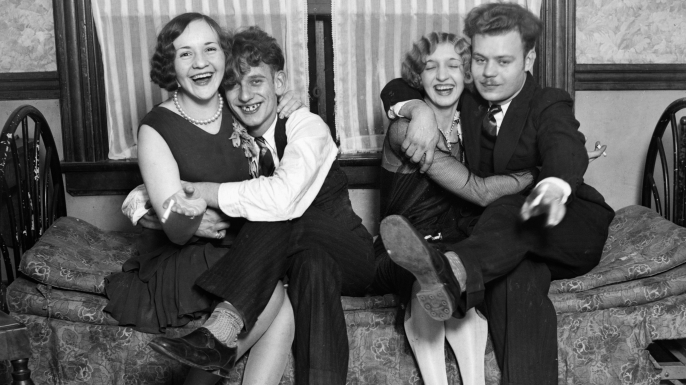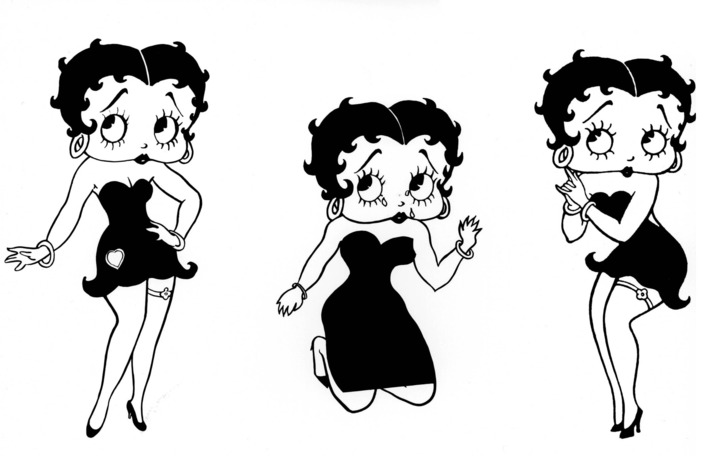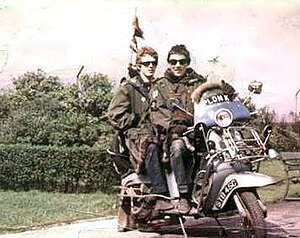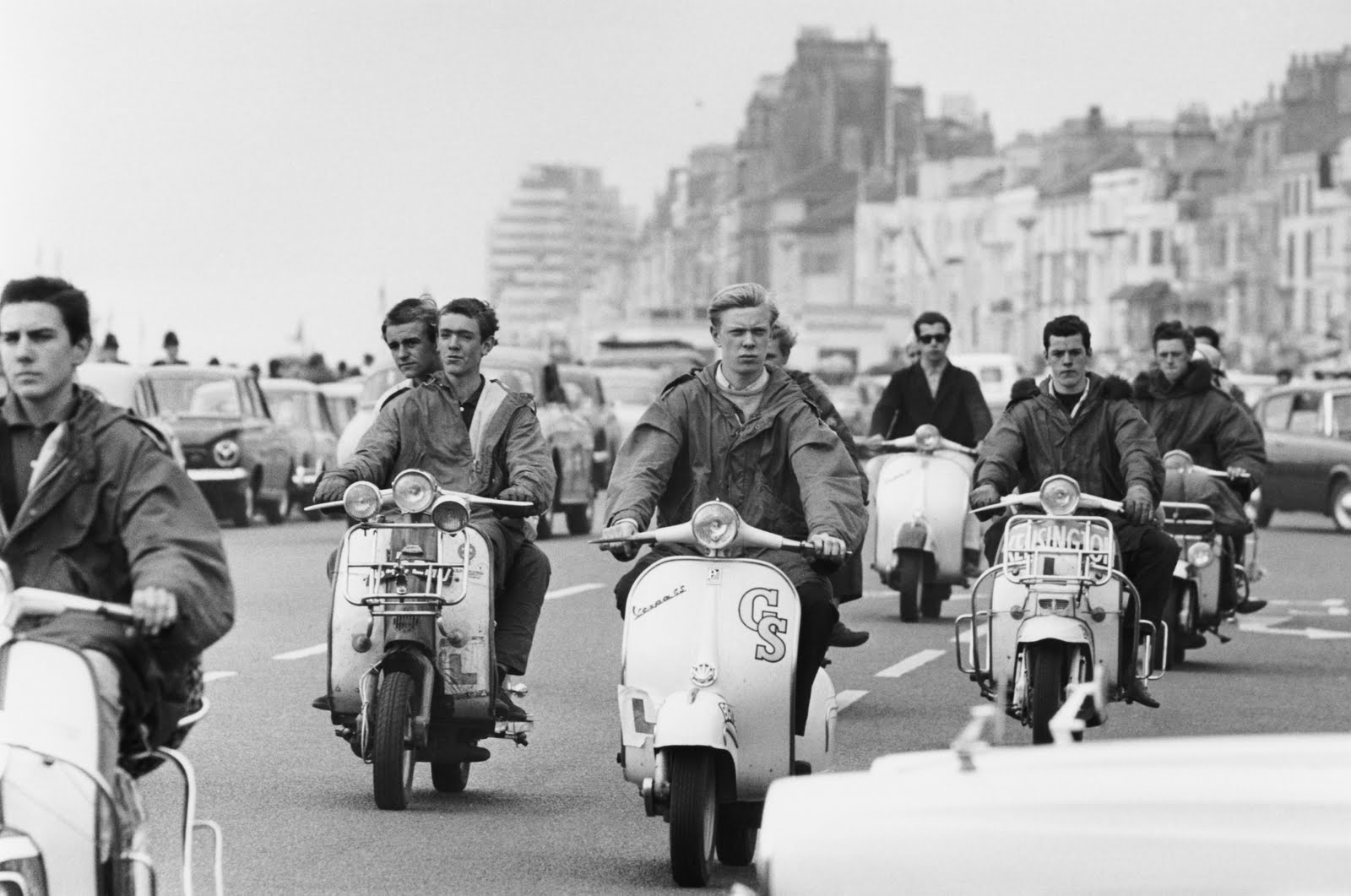Youth culture is the way that adolescents live and the norms, values, and practices they share. Culture is the shared symbolic systems, and processes of maintaining and transforming those systems.
Elements of youth culture include beliefs, behaviours, styles, and interests. An emphasis on clothes, popular music, sports, vocabulary, and dating set adolescents apart from other age groups, giving them what many believe is a distinct culture of their own.
 Throughout the 20th century, youths had a strong influence on both lifestyle and culture. The Flappers and the Mods are two great examples of the impact of youth culture on society. Flappers were a generation of young Western women in the 1920s who wore short skirts, bobbed their hair, listened to jazz. Flappers were seen as out of the ordinary because they would wear excessive makeup, drink excessively, treat sex in a casual manner, smoke, drive cars and flout social and sexual norms. Influences of this never-before-seen behaviour among young women include the death of large numbers of young men in the war, and the Spanish flu epidemic which struck in 1918 which in-turn inspired, in young people a feeling that life is short and could end at any moment. The evolving image of flappers was of independent young women who went by night to jazz clubs which were viewed as erotic and dangerous, where they danced provocatively, smoked cigarettes and dated freely because they wanted dot live life to the fullest without nay worry and made this obvious through their actions and they way they presented themselves through their clothes and lifestyle choices. They were attempting to be controversial and this image has created an icon for the years to follow but the presentation for women nowadays is completely different where actions such as wolf whistles are regarded as misogynistic and demeaning. People have had to change with the times to fit the political laws and to be politically correct.
Throughout the 20th century, youths had a strong influence on both lifestyle and culture. The Flappers and the Mods are two great examples of the impact of youth culture on society. Flappers were a generation of young Western women in the 1920s who wore short skirts, bobbed their hair, listened to jazz. Flappers were seen as out of the ordinary because they would wear excessive makeup, drink excessively, treat sex in a casual manner, smoke, drive cars and flout social and sexual norms. Influences of this never-before-seen behaviour among young women include the death of large numbers of young men in the war, and the Spanish flu epidemic which struck in 1918 which in-turn inspired, in young people a feeling that life is short and could end at any moment. The evolving image of flappers was of independent young women who went by night to jazz clubs which were viewed as erotic and dangerous, where they danced provocatively, smoked cigarettes and dated freely because they wanted dot live life to the fullest without nay worry and made this obvious through their actions and they way they presented themselves through their clothes and lifestyle choices. They were attempting to be controversial and this image has created an icon for the years to follow but the presentation for women nowadays is completely different where actions such as wolf whistles are regarded as misogynistic and demeaning. People have had to change with the times to fit the political laws and to be politically correct.


 Betty Boop, the cartoon character invented in 1930 by Max Fleischer as a caricature of a flapper, became an icon of the 1920s.
Betty Boop, the cartoon character invented in 1930 by Max Fleischer as a caricature of a flapper, became an icon of the 1920s.
The Flapper, which stands as one of the most enduring images of youth and new women in the twentieth century, however, when in 1920s many Americans regarded flappers as threatening to conventional society, danced suggestively and openly flirted with boys – in-turn, making them the same icons as males now in the modern day where males have become the power gender who regards females as objects of their sexual desires.
The flapper lifestyle and look disappeared in America after the Wall Street Crash and following The Great Depression. The high-spirited attitude and hedonism were less acceptable during the economic hardships of the 1930s.
Hedonism is the notion that pleasure (in the sense of the satisfaction of desires) is the highest good and proper aim of human life above any unnecessary stresses and once this happiness was achieved, it was believed that this state would stay stationary and one would be free to live life to fullest because of an all round sense of satisfaction. This theory can be related to the idea that boys will be boys and do whatever they want even if it is deemed unnecessary to achieve a sense of pleasure.

 Mod is a subculture that began in London in 1958 and spread throughout Great Britain and elsewhere, eventually influencing fashions and trends in other countries, and continues today on a smaller scale. Focused on music and fashion, the subculture has its roots in a small group of stylish London-based young men in the late 1950s who were termed modernists because they listened to modern jazz. The Mods and Flappers often came as two but were still separate groups although interested in similar lifestyle choices such as drinking, smoking and going out with their peers to show off, for the men, the Mods, their masculinity and boisterousness and ability to get any girl as such and for the females, the Flappers acting provocative was the way to show off their body.
Mod is a subculture that began in London in 1958 and spread throughout Great Britain and elsewhere, eventually influencing fashions and trends in other countries, and continues today on a smaller scale. Focused on music and fashion, the subculture has its roots in a small group of stylish London-based young men in the late 1950s who were termed modernists because they listened to modern jazz. The Mods and Flappers often came as two but were still separate groups although interested in similar lifestyle choices such as drinking, smoking and going out with their peers to show off, for the men, the Mods, their masculinity and boisterousness and ability to get any girl as such and for the females, the Flappers acting provocative was the way to show off their body.
Significant elements of the mod subculture include fashion (often tailor-made suits); music (including soul, ska, and R&B) and motor scooters (usually Lambretta or Vespa).
Theories such as the male faze were not thought of in this era of gender development and stereotypes because of the mind-set of all young people to just live life and not worry about the consequences of being flirtatious with no real reason. Now people have become more aware of the relationship men and women should have with one another and how it should be a relationship of respect, people do not branch out into their own sub cultures as much with a mission to attract women through the clothes they wear.
People are much more independent today and do things with the intention to pleas themselves as I have briefly touched upon in my magazine where I ask my models about their experience with using clothes as a way to express themselves and feel confident in themselves, especially in a world that is much more driven by social-media and the millions of voices that circulate such sites.
As well, in todays society, people an especially young people, do take inspiration form the styles and behaviours of eras such as the 20s, 30s, 40s, 50s, 60s, 70s, 80s, and 90s to inform the way they dress and the trends et in these eras have lived to influence the way people dress now and this has gone on to define what street fashion can be.
Most major youth subcultures have had an associated street fashion. Examples from the 1950s, 1970s, 1980s, 1990s, 2000s, and 2010s include:
- Hippies (denim, bohemian style, long hair, flower power and psychedelic imagery, flared trousers)
- Teddy Boys (drape jackets, drainpipe trousers, crepe shoes)
- Punk fashion (ripped clothing, safety pins, bondage, provocative T-shirt slogans, Mohican hairstyle)
- Skinheads (short-cropped hair, fitted jeans, Ben Sherman button-up shirts, Fred Perry polo shirts, Harrington jackets, Dr. Martens boots)
- Gothic fashion (black clothing, heavy coats, poet shirts, big boots, makeup)
- Preppy (argyle sweaters, chinos, button down oxford cloth shirts, and boat shoes).
- Hip hop fashion (ultra-baggy pants, ECKO, Tribal Gear, South Pole, Avirex, FUBU, Sean Jean, NIKE)
- Hipster or indie (glasses, jeans, beanies, sneakers, ties, suspenders, checked shirts, beards)
- Rasta (African-inspired clothing, dreadlocks)
- Greaser (subculture) (Levis 501 jeans, t-shirts, leather jackets, sunglasses, Cowboy boots or motorcycle boots, hair gel)
- Urban (colourful apparel, large accent jewellery, skinny jeans, jackets, t-shirts)
- Feminine (dresses, hats, sunglasses, hand bags, floral prints)

